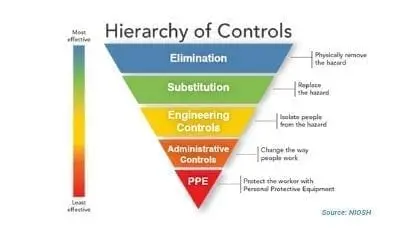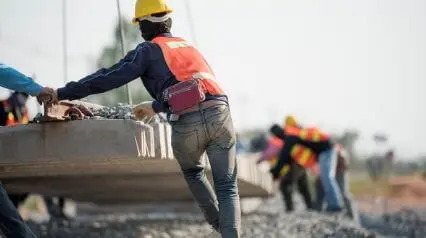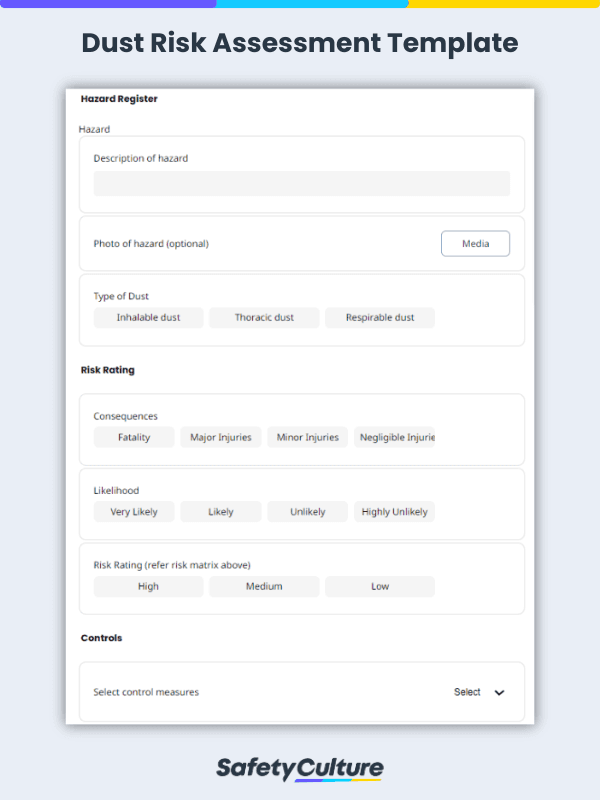What is a Dust Risk Assessment?
A dust risk assessment is a tool used by safety officers to control tasks so that they do not create high levels of construction dust such as silica, wood, and lower toxicity dust. It helps to evaluate if the amount of dust emission magnitude exceeds with the Workplace Exposure Limit (WEL) in construction activities like demolition, earthworks, construction, and trackout.
Why Perform Dust Risk Assessment?
Overexposure to dust can lead to chronic diseases such as lung cancer, silicosis, and asthma. According to the Health and Safety Executive (HSE) report, over 500 construction workers die from exposure to silica dust every year in the United Kingdom alone. As compliance with the COSHH Regulations (2002), preventive measures should be implemented to protect employees from overexposure to hazardous substances.
What are the Hazards of Dust?
Dust is likely to occur in almost every industry and different levels of risk are associated with dust hazards. The most prone industries include mining, construction, food production, chemical manufacturing, and woodworking facilities, among others.
According to WorkSafe Queensland, dust majorly occurs in the processes of cutting materials, weighing loose powders, stockpiling processed materials, clearing up spillages, handling livestock, abrasive blasting, and other tasks that cause small particles of dust to accumulate.
Dust—as an asthma-inducing material in its simplest form, is already largely tied to health-related hazards. Overexposure to hazardous dust increases the possibility of developing the following diseases or worsening your existing medical conditions:
- pneumoconiosis;
- lung scarring and fibrosis;
- pulmonary disease;
- cancer;
- heart disease;
- bacterial and fungal infections; and
- toxic effects in the blood.
Aside from the health effects, hazardous dust is also a persistent safety issue in workplaces. Combustible dust is an industrial concern wherein—if a reasonable amount of dust accumulates in an enclosed space, can contribute to the cause of dust fire or dust explosion. Both of these hazards can lead to damage to property, injury, and even fatality.
What to Include in a Dust Risk Assessment?
Risk assessment is an essential factor for workplace safety. A comprehensive risk assessment helps protect workers, employers, the workplace, and the public from potential harm. The same goes for dust risk assessments—they should address the risks associated with each identified hazardous dust and determine control measures aimed at reducing its negative impact.
Below is a list of items that a dust risk assessment should ideally have:
- essential information (e.g. company name, inspector name, date of inspection, location)
- identified risk
- type of dust
- description of hazard
- consequences
- likelihood
- risk rating
- control measures
- scoring (optional)
- photo evidence (optional)
- digital signature
Best Practices to Implement Control Measures for Dust Risks and Hazards
Following the hierarchy of controls can be effective in implementing the right control measures to reduce health risks. Evaluate the risk and identify the level of priority before implementing any course of action. This would help secure employees from overexposure to harmful substances and prevent incidents and injuries.

- Elimination
This is the most effective control measure because it entails physically removing or avoiding hazards. For example, use special cutting techniques to prevent the formation of dust rather than grinding or sawing. - Substitution
This involves replacing hazardous equipment with non-hazardous ones. For example, rather than mixing dry components, use dust-suppressed materials and emulsions. - Engineering Controls
This control measure physically isolates people from hazards or creates physical controls to help minimize risk. For example, creating a physical enclosure of dust-formulating procedures under negative air pressure. - Administrative Controls
This control measure limits employees’ exposure to the hazards by controlling the extent of the exposure. For example, reducing the number of employees and changing the frequency and duration of exposure to construction dust (all throughout the construction stages and the post-construction cleaning process). - RPE (Respiratory Protective Equipment)
This control measure helps protect employees from first-hand exposure to construction dust. For example, using a respirator or mask when cutting wood to avoid direct inhalation of wood dust or other harmful substances.



